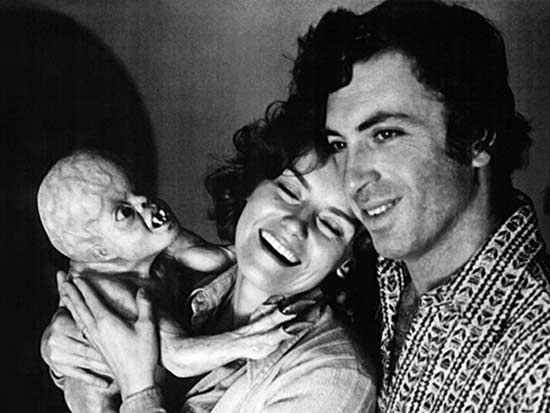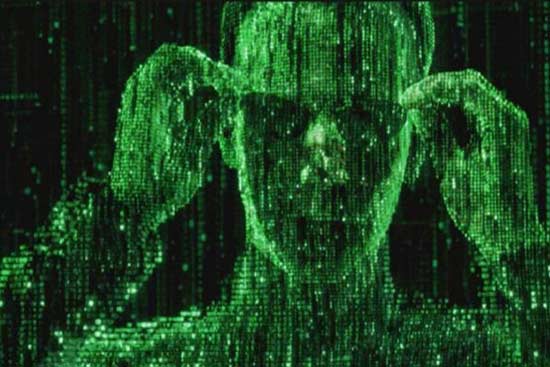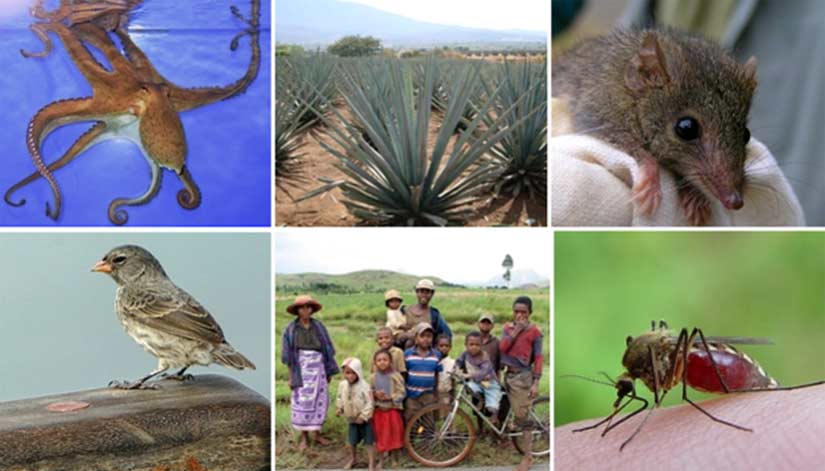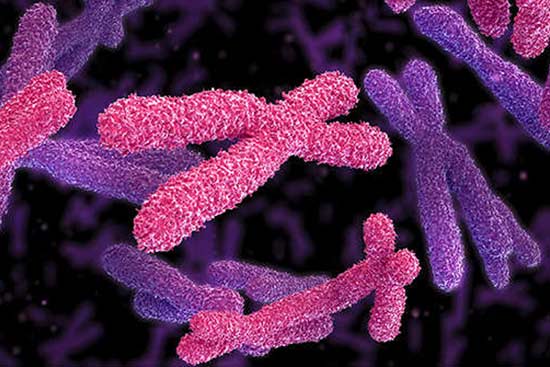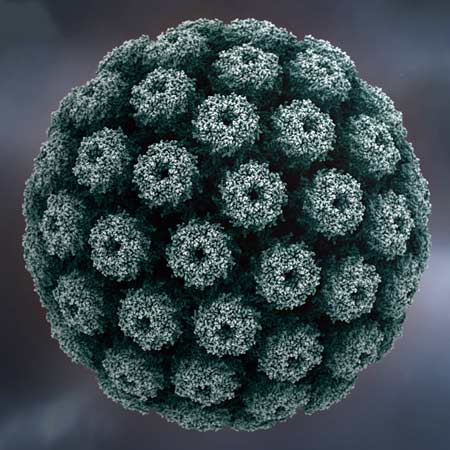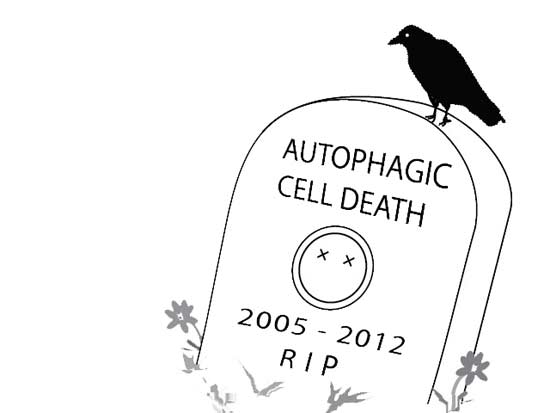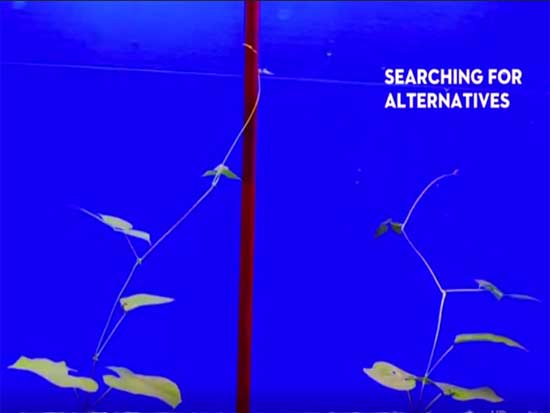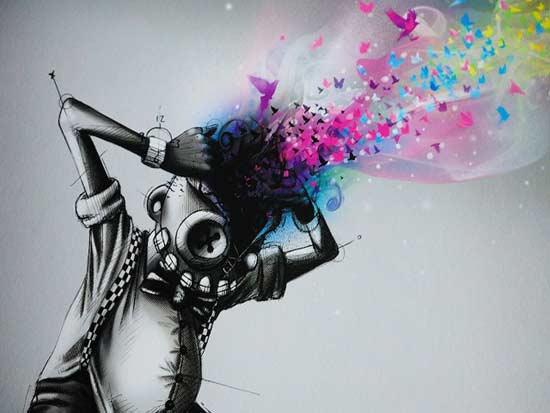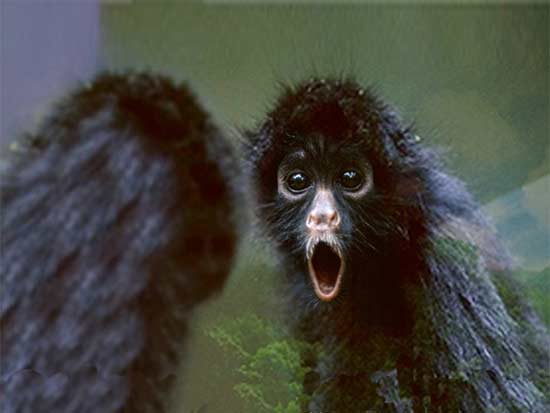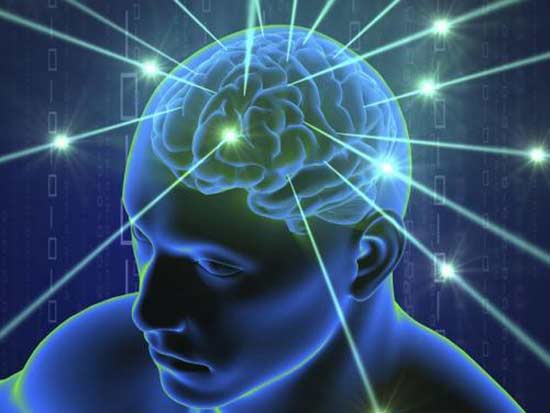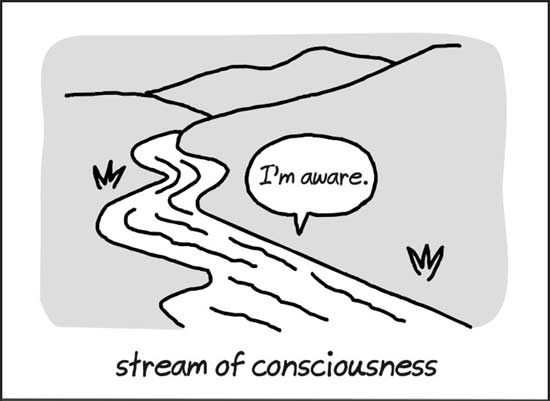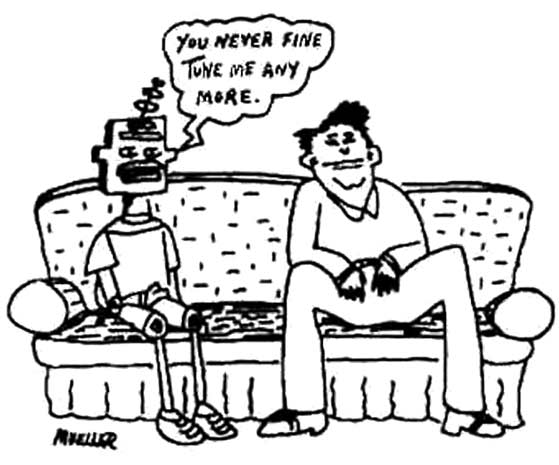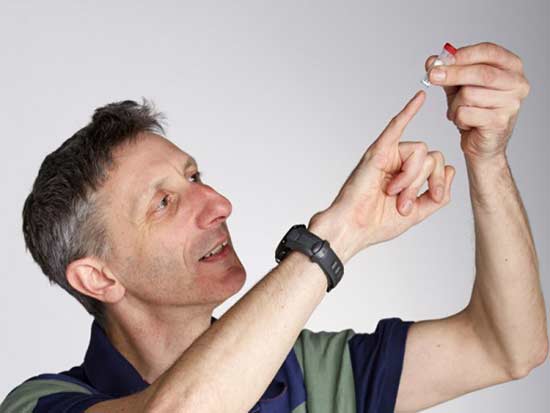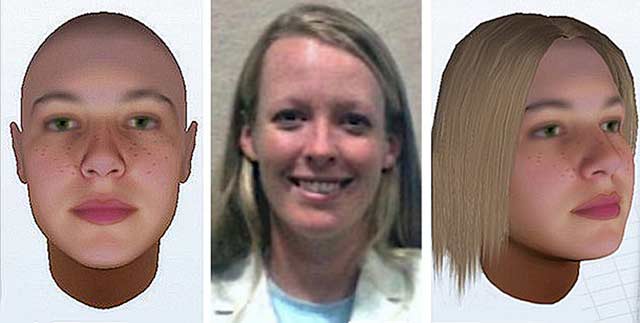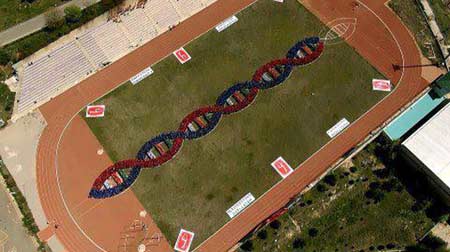Consciousness is whatever is reading these words right now, and understanding them.
—Living Systems: Sensing, Responding, Experiencing, Fascinating
June 15, 2015
Life, awareness, consciousness, and self-concept are things at which we’re all expert. Well, sort of. We’ve experienced them all of our lives, but we don’t quite understand them.
Life
There’s an intellectual vacuum as to how the physics of matter becomes translated into the biology of life, though there’s no shortage of definitions of life — one of the shortest was adopted by NASA in 1994: “a self-contained chemical system capable of undergoing evolution.” Even in this age of cloning and synthetic biology, the remarkable truth remains that nobody has ever made anything living entirely out of dead material. Using existing life remains the only way to make new life (think seeds, babies, and even food). Are we just temporarily missing a vital ingredient or an important step? Or are there dragons here?
Awareness
Awareness can be as simple as the ability to perceive sensory patterns and have a cognitive reaction. Plants are able to sense and optimally respond to many environmental variables — light, water, gravity, temperature, soil structure, nutrients, toxins, microbes, herbivores, and chemical signals from other plants. There may exist a dispersed brain-like information-processing facility in plants and maybe hive insects as well to integrate data and coordinate behavioural responses.
Consciousness
Consciousness is one of the most extraordinary phenomena in the known universe, but it works in ways we don’t really understand. It means having thoughts and feelings. It’s difficult to define except in terms that are unintelligible without already having a grasp of what it means. It’s impossible to specify what consciousness is, what it does, or why it evolved. According to Stuart Sutherland writing in “Consciousness” from the Macmillan Dictionary of Psychology: “Nothing worth reading has ever been written on it.”
Self-Concept
Self-concept is the image that we have of ourselves, our perception of our abilities and our uniqueness. It changes over time to become much more organised, detailed, and specific. Simply put, it’s how we think we should behave and act out our various life roles.
My personal view is:
- It takes life to make life — the so-called artificial life being created in laboratories starts with living cells in which much of the DNA is replaced with laboratory-crafted DNA. This in no way proves that an artificial intelligence will ever be truly alive — unless its brilliance is biologically embodied. I see no evidence of life appearing spontaneously — you have to start with something that’s alive to make something else that’s alive: a seed, a cutting, or an egg-plus-a-sperm. I personally don’t think life spontaneously arose on Earth — I think Earth was seeded with life from meteorites. However, I acknowledge that many scientists (but certainly not all) view this with scepticism. (Panspermia is the concept that microbial life is everywhere in the universe.)
- I see life as a naturally-occurring fundamental characteristic of the universe and I think it’s absolutely necessary for awareness and for a concept of self.
- I feel that life occurs at both an individual level and at the level of groups which contain those individuals (a cell can be alive and have an awareness and so can a body made up of trillions of those cells, and the cells’ awareness and the body’s awareness are independent of each other). I’m less sure about consciousness.
Human consciousness is just about the last surviving mystery. Consciousness stands alone today as a topic that often leaves even the most sophisticated thinkers tongue-tied and confused. And, as with all earlier mysteries, there are many who insist — and hope — that there will never be a demystification of consciousness. [Daniel C Dennett, Consciousness Explained (1991).]
What Is Life?
We can’t truly define life until we have more than the one example. We only have DNA-based life on Earth. Will we find the same kind of life on other worlds or will we find NO life on other worlds? Until we answer that, any discussion of life will be incomplete.
No part of a cell seems to be alive – cells are made of non-living things. So perhaps it’s the DNA that’s alive? No, the genes and proteins of neither cells nor viruses are by themselves considered to be alive. A virus fails to reach critical complexity.
Life is an emergent, complex state, but it’s made from the same fundamental, physical building blocks that constitute viruses. Approached from this perspective, viruses may be thought of as being more than inert matter: they verge on life. Because they occupy a netherworld between life and non-life, they can pull off unusual feats. For example, bacteria are often killed when ultraviolet (UV) radiation from the sun destroys their nuclear DNA. Some viruses encode enzymes that repair various host molecules and they have the capacity to multiply or “grow” in dead cells, thereby actually restoring some dead cells to life. ["Are Viruses Alive?" by Luis P Villarreal, Scientific American, December 2004.]
If neither the virus nor the dead cell were living but now they are, then where did that life come from? Definitions of life, though there are many, are still incomplete.
Note that there are 225 million cubic metres of viruses on Earth (maybe more).
No one has ever managed to compile a set of physical properties that unites all living things and excludes everything else — there are always exceptions. Crystals aren’t alive, yet they’re highly organised and grow. Fire consumes energy and gets bigger. In contrast, bacteria, tardigrades, and even some crustaceans can enter long periods of dormancy (even thousands or millions of years) during which they aren’t growing, metabolising or changing, yet aren’t technically dead. How do we categorise a single leaf fallen from a tree? When attached to the tree, the leaf’s alive, its many cells working tirelessly to turn sunlight, carbon dioxide and water into food and performing other duties. When the leaf detaches from the plant, its cells don’t instantly cease activity. Does it die on the way to the ground? Or when all the individual cells finally expire? If you pluck it from the plant and keep its cells nourished, is that life? I once rooted a leaf and kept it for months. It grew huge but no other leaves ever sprouted from it. So, were the cells alive, but the organism dead? Can something be considered half-alive (perhaps a wilting plant that isn’t yet dead but is too far gone to recover)? “Half-dead” is a fairly common term but I’ve never considered that half-alive was its synonym.
Why is defining life so frustratingly difficult? Because no specific physical property or set of properties clearly separates the living from the inanimate. Life is an invented concept. On the most fundamental level, all matter that exists is an arrangement of atoms and their constituent particles. These arrangements fall onto an immense spectrum of complexity, from a single hydrogen atom to something as intricate as a brain. There is no threshold at which a collection of atoms suddenly becomes alive. [“Why Life Does Not Really Exist” by Ferris Jabr from Scientific American Blogs, 2 December 2013.] An intact human brain can be biologically alive but incapable of consciousness, so we say it is “brain-dead.”
Wikipedia's disambiguation page for “Life” also offers 23 albums + 20 songs (and counting) with that title, also 2 record labels, 8 movies, 5 tv series, an episode of Stargate: Universe, several instances and types of print publications, multiple radio stations, a board game, something you can lose in a game, a cellular automaton, an advertisement for Halo 3, a play, a musical, and a cereal that Mikey likes. Schrödinger, on the other hand, said essentially that life is embodied super-organisational skills. If that’s the case, perhaps there’s hope for computer life. (One of the innumerable definitions for life suggests that it is primarily information that manages to ensure its continued existence. Go HAL.)
Life is exquisitely regulated and it has the characteristic of heritability. On Earth, life is based on carbon, an element formed and found in the remains of dying stars. It’s a good substrate because of its ability to link in many ways, giving it the capacity to store and transmit information. It’s possible to imagine that life could be based on silicates (the element right next to carbon on the periodic table), but there are no examples that we’ve ever run across. However, a self-programming computer could be based on silicates and also may be capable of evolution. But whether it could reasonably be called “alive” remains to be seen.
Life has metabolism, an ability to undertake chemical reactions to sustain itself. Many, many metabolic reactions (into the hundreds) can take place simultaneously within a single cell, reactions that would take a large power plant to accomplish externally, yet they take place very gently and smoothly within each of our trillions of cells. Life is the reverse of the second law of thermodynamics — it’s a building up of order.
As a cell nears the end of its life, its cell wall, its protective barrier, will begin to weaken and, depending on the circumstances, one of 3 things will happen: It will send an “eat me” signal to a specialised maintenance cell that will then devour and recycle the ailing cell’s contents; it will quarantine and consume itself in a kind of programmed altruistic suicide; or it will go rogue, rupturing abruptly and spilling its contents into the surrounding tissue, causing severe inflammation and further tissue damage. In all cases, when the integrity of the outer membrane is compromised, a cell’s fate is sealed — this is a point of no return.
A non-chemical life would imply that DNA isn’t necessary. If life doesn’t require DNA, then could computers or robots someday spring to life — or at least gain consciousness? In science fiction, the answer to that question always seems to be yes, but often (for dramatic purposes) the outcome proves disastrous. A better understanding is needed of what unrecognised properties might yet emerge in living systems which undergo stress due to Earth’s changing environmental conditions. Predictions of artificial intelligence having a concept of self are as yet unfounded in fact. I feel a true AI (capable of creative thought) would need consciousness. At the point an AI becomes conscious, would it also be de facto considered alive?
Some scientists have proposed in the last few decades that a general “living systems” theory is required to explain the nature of life. These living systems are organised into patterns which repeat themselves — theme and variations — at each level. There are continuous flows through living systems as they maintain their highly organised steady states. [James Grier Miller, Living Systems, 1978, p. 1025.] They’re dynamic and complex, and their behaviour can’t always be predicted from the properties of individual parts. Cognition is a process present at low organic levels that we don’t usually consider to be “awareness”. [Humberto Maturana and Francisco Varela’s Santiago Theory of Cognition as quoted by Capra, Fritjof (1996), The Web of Life: A New Scientific Understanding of Living Systems, Garden City, NY: Anchor Books.]
What Is Awareness?
Awareness is a state in which you have no future or past, a state of just being — no executive ego control in your dreams, no planning, things just happen to you. Awareness is hard to detect because the only way we have of knowing whether or not someone is aware is by asking. Comatose patients, for example, have their eyes closed at all times and are neither awake nor aware. Patients in the vegetative state, however, often show signs of wakefulness, opening their eyes and looking around the room — and they have intact sleep-wake cycles but don’t fixate on anything in particular and never respond to a command. They’re often referred to as awake but not aware.
“Basic awareness” is an ability to integrate sensations from the environment with one’s immediate goals and feelings in order to guide behaviour. This awareness has the capacity to generate various responses and a cognizance of one’s surroundings, but not an ability to reflect on what is being experienced.
Are plants aware? Plants accurately compute their circumstances, use sophisticated cost–benefit analyses, and take tightly-controlled actions to mitigate and regulate diverse environmental stressors. How plants sense and react is somewhat unknown. They don’t have nerve cells like humans, but do have a system for sending electrical signals. They even produce neurotransmitters such as serotonin, dopamine, and glutamate, though the role of these remains unclear. Also, plants may have a rudimentary memory.
Mimosa is a plant, which looks something like a fern. It collapses its leaves temporarily when disturbed. One researcher set up a contraption that dropped a mimosa plant (without damaging it). When the plant dropped, its leaves collapsed (as expected). The researcher repeated the drop every 5-6 seconds. After 5 or 6 drops, plants stopped responding as if they’d learned to tune out an irrelevant stimulus. Merely worn out from all the dropping? To test that, the now non-responsive plants were shaken instead. They repeatedly collapsed, showing that they had made the distinction that dropping was a signal they could safely ignore. Tested every week for 4 weeks, plants continued to “remember” their lesson. (A 3-minute-long time lapse video helps to illustrate what appears to be quite purposeful behaviour in plants.)
Many drugs, from aspirin to opiates, derive from compounds designed by plants for their own benefit. Intelligence is sometimes defined as the ability to solve problems. So some people (those who accept that or a similar definition for intelligence) may think it’s okay to say that plants are intelligent. Intelligent behaviour in plants may be an emergent property of cells exchanging signals in a network; it may, in fact, be a property of all life.
Nevertheless, plants aren’t conscious. (And they don’t prefer Mozart or care if you talk to them.) Some scientists urgently disagree with the notion of plant intelligence. “Yes, plants have both short- and long-term electrical signalling, and they use some neurotransmitter-like chemicals as chemical signals,” Lincoln Taiz, an emeritus professor of plant physiology at UC Santa Cruz says. “But the mechanisms are quite different from those of true nervous systems.” Taiz says that the writings of the plant neurobiologists suffer from “over-interpretation of data, teleology, and anthropomorphizing, philosophizing, and wild speculations.” He’s confident that plant behaviours we can’t account for will eventually be explained by the action of chemical or electrical pathways, without recourse to “animism.” [“The Intelligent Plant” by Michael Pollan, The New Yorker, 23 December 2013.] This issue of plant awareness generates rather strong feelings in researchers, perhaps because it smudges the sharp line separating the animal kingdom from the plant kingdom.
But consider this: plants can’t run away and they frequently get eaten, it serves them well not to have any irreplaceable organs such as a brain. A plant has a modular design, so it can lose up to 90% of its body without being killed. This gives it resilience.
In an early (flawed) Star Trek episode called “Wink of an Eye” (episode #66), a race of aliens living in a radically sped-up dimension of time arrive on Earth and, unable to detect any movement in humans, came to the logical conclusion that they were “inert material” with which they could do as they pleased. The aliens proceed to ruthlessly to exploit humans. (Who knows? Perhaps after killing up to 90% of us and realising we aren’t eliminated — and indeed are beginning to recover — they decide we’re weeds and should be exterminated.)
Honey bees, an aware hive insect, appears to have a cognitive map for information they learn, which they can utilise to communicate to other bees. In one test reported in Science News (1983), a supply of sugar water was day after day moved 25% further away from a hive. Bees communicated the new location among themselves each day. But one day the sugar water was placed on a boat anchored in the middle of a small lake. When scouts returned to the hive to communicate their find, the other bees refused to go with them. They frequently flew over that lake to reach pollen sources on the opposite shore and, from their cognitive maps, they presumably knew that location contained no place where food could be found.
In another test related in Discover (1986), in an article called “A Honey of a Question: Are Bees Intelligent?”, bees were lured to a dish of artificial nectar, which was gradually moved farther from the hive after they became accustomed to it. Bees were then placed in a darkened jar and relocated to a spot where the hive was still visible, but not the nectar dish. When released one by one, each bee would appear disoriented for a few seconds, then fly directly for the covert dish; 73 of 75 bees reached it in 28 seconds or less, apparently accomplishing this by devising a new flight path based on their cognitive maps of visible landmarks.
We lose consciousness when we sleep but retain a degree of awareness — hence our alarm clocks are able to awaken us (we’re aware of sounds) as can coffee or breakfast (we’re aware of smells), or a touch (we’re aware of potential danger).
There can be no consciousness without awareness — however, there can be awareness without consciousness.
What Is Consciousness?
[We should] reserve the term “consciousness” for the phenomena of experience, using the less loaded term “awareness” for the more straightforward phenomena. If such a convention were widely adopted, communication would be much easier; as things stand, those who talk about “consciousness” are frequently talking past each other. [David J Chalmers, “Facing Up to the Problem of Consciousness”, Journal of Consciousness Studies 2 (3), 1995, pp. 200-219.]
At least so far as we’ve been able to determine, only living things have consciousness (self-awareness) — by that I mean the capacity to understand that they are unique individual entities. I remember the exact moment when I realised that I was an individual — I thought it was awesome. I walked around the house repeating the word “Me, me, ME.” I wasn’t quite 2 years old. (Researchers have demonstrated that the awareness of ourselves begins to emerge at around one year of age and becomes much more developed by around 18 months of age. By the age of 2 years, 70% of children are self-aware.)
The really hard problem of consciousness is the problem of experience. When we think and perceive, there is a whir of information-processing, but there’s also a subjective aspect. When we see, for example, we experience visual sensations: the felt quality of redness, the experience of dark and light, the quality of depth in a visual field. Other experiences go along with perception in different modalities: the sound of a clarinet, the smell of mothballs. Then there are bodily sensations, from pains to orgasms; mental images that are conjured up internally; the felt quality of emotion, and the experience of a stream of conscious thought. [David J Chalmers, “Facing Up to the Problem of Consciousness”, Journal of Consciousness Studies 2 (3), 1995, pp. 200-219.]
Secondary consciousness is loosely and commonly associated with having awareness of one’s own consciousness. It includes such features as self-reflective awareness, abstract thinking, choice, and thinking about thinking.
What Is Self-Concept?
Our personal identity includes such things as personality traits and other characteristics that make each person unique. Social identity includes the groups we belong to. Generally, self-concept embodies the answer to “Who am I?” It includes our past, present, and future selves, where future selves (or possible selves) represent individuals’ ideas of what they might become, what they would like to become, or what they are afraid of becoming. People have a tendency to perceive their past selves less favourably (“I’m better than I used to be”) and their future selves more positively (“I will be better than I am now”).
- Are you your body? (This would include your brain.) If you think you’re essentially your body, after extensive cosmetic surgery are you still you? After genetic modifications to your DNA are you still you? How about each day a mere 10% of you is replaced with replica cells? In 10 days are you still you? After decades, when the cells in your body have mostly all been replaced (some multiple times), are you still you? Physical and mental continuity seems to play an important role in a person’s self-concept.
- Are you your brain? Unlike other transplanted organs, when you swap brains most people would consider that they had swapped identities — you wouldn’t have undergone a brain transplant but rather a body transplant — your locus would have shifted. You’d still feel like you, but with a different body. (Of course, this is theory, with no basis as yet in reality.) Meanwhile, your old body would not be you if it contained someone else’s brain. So what makes you you is your brain? What if you replace 10% of your brain (the part damaged when you fell off that ladder) with a computer chip? “Better than before!” all your friends say. The next year, brain surgery to remove a small tumour has the doctor put in another 10% chip to repair the damage left behind. The next year a concussion … well, you get the idea. In 10 years, when your skull is full of chips rather than cerebral cortex, are you still you?
- Are you your data? When you transfer brain contents rather than physical brains, this would test whether what makes you you is your body of experiences (your memories). Some evidence that this might be true is shown when people have no memories (due to amnesia, Alzheimer’s, or various types brain damage) and it appears to their friends and families that the person they once knew and loved is no longer present. Assume the contents of your consciousness can be uploaded to a computer storage device periodically, so that if major brain damage occurs in the future, a fresh brain from a recently-dead donor could be wiped and your stored data uploaded instead. Would you still be you?
Perhaps you’re defined by your continuous existence — your long chain of overlapping memories, personality traits, and physical characteristics. What you are is not really a thing so much as a dynamic. And the fact that there’s no specific word for this dynamic is what makes defining it — or even talking about it — difficult indeed.
Where Things Stand
- Synthetic Life
Artificial life created in vitro from bio-chemicals and their component materials — so-called synthetic life experiments — attempt to recreate life from non-life. In May 2010, a group at the J Craig Venter Institute announced they had assembled a complete genome of millions of base pairs, inserted it into a living cell that had had its own DNA removed, and caused that cell to begin replicating. This cell was called by Venter the “first synthetic cell” and it cost over US$40 million. However, there’s debate within the scientific community over whether this cell can be considered synthetic since the chemically synthesised genome was an almost one-to-one copy of a naturally occurring one and the recipient already-living cell was also naturally occurring. So the Craig Venter Institute clarified, “...we don’t consider this to be 'creating life from scratch’ but rather creating new life out of already-existing life using synthetic DNA.” They propose to stretch the boundaries between life and machine until the two overlap to yield “truly programmable organisms” and feel their goals are “relative close”. [Good luck with that.] [“Synthetic Biology” from Wikipedia, last accessed 4 March 2015.]
- Life without DNA
- Methane-based — Lipid bilayer membranes are the foundation of life on Earth, but they aren’t viable outside of a biology based on liquid water. This fact has caused astronomers who seek conditions suitable for life to search for exoplanets within the “habitable zone,” the narrow band in which liquid water can exist. However, cell membranes can be created that function at temperatures of -180°C (-292°F) — far below those at which water is a liquid. A new type of membrane composed of small organic nitrogen compounds would be capable of forming and functioning in liquid methane at cryogenic temperatures. These membranes in a cryogenic solvent would have an elasticity equal to that of lipid bilayers in water at room temperature. Stable cryogenic membranes could arise from compounds observed in the atmosphere of Saturn’s moon, Titan, known for the existence of seas of liquid methane on its surface. [“Membrane alternatives in worlds without oxygen: Creation of an Azotosome” by James Stevenson, Jonathan Lunine, Paulette Clancy, Science Advances, 27 February 2015, last accessed 4 March 2015.] Would “life” in this situation be equivalent to the life found on Earth?
- Computer-based — Principles of Darwinian evolution are being used to develop robot brains that can navigate mazes, identify and catch falling objects, and work as a group to determine in which order they should exit and re-enter a room. The projects are all part of an effort to create artificial brains that think, plan, and predict, and will ultimately be conscious. The research group of Chris Adami (a computational biologist at Michigan State University) uses genetic algorithms operating on a mathematical framework called Markov networks to model a large population of robot “brains” working on a particular task, like finding the exit to a maze. The brains that perform the task best have the largest number of simulated “offspring.” Researchers run this genetic algorithm over thousands, and sometimes hundreds of thousands of generations, and then download the surviving brains into robots that execute the tasks in the outside world. Adami believes that evolving robot brains in complicated worlds that force them to interact with each other is the best path toward self-aware intelligence. [“Evolving Robot Brains” from PhysOrg, 2 March 2015, last accessed 4 March 2015.]
Conclusion
Life is beyond our ability to create from raw materials at this time. Will this always be the case? We don’t know.
Awareness can only be measured by the entity possessing it. When we use a virtual reality helmet, we aren’t “in” the virtual reality — instead, the virtual reality is in our awareness. I think it’s a small but crucial distinction. Awareness, like life itself, may be a constituent of the fabric of reality (but probably only for living things — your chair is unlikely to know or care whether you’re sitting in it or not).
Even if a computer passes the Turing test, we won’t “know” that it’s self-aware even if we ask it and it replies in the affirmative. Only the computer itself would for sure know that it has consciousness. Consciousness is more than answering difficult questions using a large knowledge base. How much more? We don’t know that either. (But we all have opinions.)
Sources
“Awareness” from Wikipedia, last accessed 9 June 2015, http://en.wikipedia.org/wiki/Awareness.
“Bee learning and communication” from Wikipedia, last accessed 11 June 2015, http://en.wikipedia.org/wiki/Bee_learning_and_communication.
“Cognition” from Wikipedia, last accessed 9 June 2015, http://en.wikipedia.org/wiki/Cognition.
“Consciousness” from Wikipedia, last accessed 3 June 2015, http://en.wikipedia.org/wiki/Consciousness.
“The Intelligent Plant” by Michael Pollan, The New Yorker, 23 December 2013, http://www.newyorker.com/magazine/2013/12/23/the-intelligent-plant.
“Living Systems” from Wikipedia, last accessed 11 June 2015, http://en.wikipedia.org/wiki/Living_systems.
“Plant perception (physiology)” from Wikipedia, last accessed 11 June 2015, http://en.wikipedia.org/wiki/Plant_perception_.
“Secondary consciousness” from Wikipedia, last accessed 11 June 2015, http://en.wikipedia.org/wiki/Secondary_consciousness.
“Self-concept” from Wikipedia, last accessed 11 June 2015, http://en.wikipedia.org/wiki/Self-concept.
“Self-knowledge and emotional development” by Lewis, M & Brooks-Gunn, J (1978) in M Lewis & L Rosenblum (Eds), The development of affect: The genesis of behavior, 1 (pp. 205-226), New York: Plenum Press.
“What Is Life?” lecture by Sir Paul Nurse, Imperial College of London, November 2011, explaining Erwin Schrödinger’s collected Trinity College, Dublin, lectures, YouTube, last accessed 8 June 2015, https://www.youtube.com/watch?v=8-cTlKVsvvM.
“What Is Psychology?” by Pastorino, E E & Doyle-Portillo, S M (2013), Essentials, Belmont, CA: Wadsworth.
“What Makes You You?” by Tim Urban, Wait But Why, last accessed 10 June 2015, http://waitbutwhy.com/2014/12/what-makes-you-you.html.
“When Does Consciousness Begin and End?” by Mo Costandi, NovaNext, 27 May 2015, http://www.pbs.org/wgbh/nova/next/body/consciousness/.
“Wink of an Eye” from Wikipedia, last accessed 11 June 2015, http://en.wikipedia.org/wiki/Wink_of_an_Eye,
Life Is Quirky: Random Unrelated Examples
The first message from an intelligent extra-terrestrial civilisation may not emerge from a radio telescope
but, instead, from a DNA sequencing machine. Such a message may, in fact, be present now in every cell in your body.
— Francis Crick
- Although the rudiments of storing digital media in DNA have been around since the 1980s, it was only recently that Harvard researchers truly cracked the code. They were able to store 700 terabytes of data on a single gram of DNA (700 terabytes was equivalent to 330 pounds of hard drives at the time) in a liquid medium that could easily fit on a fingertip. With current technology, the sequencing of DNA to retrieve information takes hours and is extremely costly, so the practicality of this form of storage is currently limited, but it’s truly amazing to think the whole of human knowledge and creation could be stored in a space no larger than your closet. [“10 Amazing Facts about DNA” by Mike Devlin, 2 May 2013, from Listverse, last accessed 3 March 2015.]
- Molecular biologists Nick Goldman and Ewan Birney of the European Bioinformatics Institute (EBI) in the UK have improved DNA encoding to a storage density of 2.2 petabytes per gram. Institutions such as the Large Hadron Collider (a particle accelerator in Switzerland) produce on the order of 15 petabytes of data each year, so the need for vast archival storage grows rapidly. Such institutions currently archive data, often by storing it on magnetic tape. Keeping it safe over many decades requires rewriting it at regular intervals, adding to preservation costs. DNA, on the other hand, can be stable for thousands of years if kept in a cool, dry place. Goldman also notes that the costs of synthesising DNA, which corresponds to writing the code as well as sequencing (reading) it, are dropping fast. According to the EBI researchers, at current rates, DNA data storage is now cost-effective for data needing to last 600 years or more. But if the costs of DNA synthesis — currently the most expensive part of the enterprise — drop 100-fold, that break-even number is about 50 years. [“Half a Million DVDs in Your DNA” by Robert F Service, Science, 23 January 2013, last accessed 3 May 2015.]
- Theoretically, 100 million hours of high definition video could be stored in a cupful of DNA — equivalent to every film and TV show ever created.
- Faces — Four years ago, Candra Alston and her 3-year-old daughter were murdered inside their South Carolina apartment. Police collected DNA at the scene, but the investigation stalled. Prime-time crime shows would have you believe DNA samples can convict the guilty and clear the innocent, but real life is more complicated. In order to find an assailant, the DNA has to match either a previous offender in the FBI’s database or a sample from one of the victim’s acquaintances. When it doesn’t, the investigation hits a wall. In the South Carolina case, police gathered 150 DNA samples and conducted 200 interviews with likely suspects. Still nothing. But a new technology uses tiny amounts of DNA to create a computer-generated illustration of the suspect. Snapshot, a programme developed by a company called Parabon NanoLabs, goes beyond simply listing physical attributes (eye and hair colour, ethnicity, facial features) and creates a 3-D image of what the killer might look like. Police in South Carolina hope public release of the suspect’s image and description will bring fresh leads. Of course, some characteristics not determined by genetics, like age and weight. And while researchers have found markers for height, no one can yet determine how one’s DNA affects height. Creating the image comes with challenges (they’re still working on it). [“With one DNA sample, new technology can recreate your face” by Melody Schreiber, The Washington Post, 23 February 2015.]
- Bio-weapons — Navy stewards gather bed sheets, drinking glasses, and other objects the president has touched. These are later sanitised or destroyed in an effort to keep would-be malefactors from obtaining genetic material. Conversely, according to a 2010 release of secret cables by WikiLeaks, Secretary of State Hillary Clinton directed our embassies to surreptitiously collect DNA samples from foreign heads of state and senior United Nations officials. Clearly, the US sees strategic advantage in knowing the specific biology of world leaders (and it’d be surprising if other nations didn’t feel the same). Decoded, these genetic blueprints could provide compromising information. In the not-too-distant future, they may provide the basis for the creation of personalised bioweapons that could take down a president and leave no trace. [“Hacking the President’s DNA” by Andrew Hessel, Marc Goodman and Steven Kotler, The Atlantic November 2012, last accessed 3 March 2015.]
- Trouble — Even if Secret Service agents were able to sweep up all the shed cells from the president’s current environs, they couldn’t stop the recovery of DNA from his/her past. DNA is a very stable molecule, and can last for millennia. Genetic material remains present on old clothes, high-school papers — any of the myriad objects handled and discarded long before the announcement of a presidential candidacy. For example, how much attention was dedicated to protecting Barack Obama’s DNA when he was a senator? A community organiser in Chicago? A student at Harvard Law? A kindergartner? And even if presidential DNA were somehow fully locked down, a good approximation of the code could be made from the cells of a president’s children, parents, or siblings, whether living or not. Presidential DNA could be used in a variety of politically sensitive ways — to fabricate evidence of an affair, fuel speculation about birthplace and heritage, or identify genetic markers for diseases that could cast doubt on leadership ability and mental acuity. The first signs of Ronald Reagan’s Alzheimer’s may have emerged during his second term. If information about his condition had been genetically confirmed and made public, would people have demanded his resignation? Could Congress have been forced to impeach him? Advances in stem-cell research allow any living cell to transform into other cell types, including in-vitro–derived (IVD) “sperm.” Live cells recovered from a dirty glass or crumpled napkin in theory could be used to manufacture synthetic sperm cells. And so, out of the blue, a president could be confronted by a “former lover” coming forward with DNA evidence of a sexual encounter. As soon as IVD sperm proves capable of fertilising eggs, “love children” can be born to women the father has never met from sperm he never produced. [Must he pay child support?] [“Hacking the President’s DNA” by Andrew Hessel, Marc Goodman and Steven Kotler, The Atlantic, November 2012, last accessed 3 March 2015.]
- DNA Day is a holiday celebrated on 25 April. It commemorates the day in 1953 when James Watson, Francis Crick, and colleagues published papers in the journal Nature on the structure of DNA. Furthermore, on that day in 2003 it was declared that the Human Genome Project was very close to complete, and “the remaining tiny gaps were considered too costly to fill.” In the US, DNA Day was first celebrated on 25 April 2003 by proclamation of both the Senate and the House of Representatives. However, they only declared a one-time celebration, not an annual holiday. Every year from 2003 onward, annual DNA Day celebrations have been organised by the National Human Genome Research Institute and 25 April has since been declared “International DNA Day” and “World DNA Day” by various groups.
[[[[[ To access page 2 of this month’s post containing The Distillery, please click here. ]]]]]
 Animals
Animals Animation
Animation Art of Playing Cards
Art of Playing Cards Drugs
Drugs Education
Education Environment
Environment Flying
Flying History
History Humour
Humour Immigration
Immigration Info/Tech
Info/Tech Intellectual/Entertaining
Intellectual/Entertaining Lifestyles
Lifestyles Men
Men Money/Politics/Law
Money/Politics/Law New Jersey
New Jersey Odds and Oddities
Odds and Oddities Older & Under
Older & Under Photography
Photography Prisons
Prisons Relationships
Relationships Science
Science Social/Cultural
Social/Cultural Terrorism
Terrorism Wellington
Wellington Working
Working Zero Return Investment
Zero Return Investment